November 20, 2019 (Updated March 7th, 2023)
Why Ayoa’s mind maps can help dyslexia
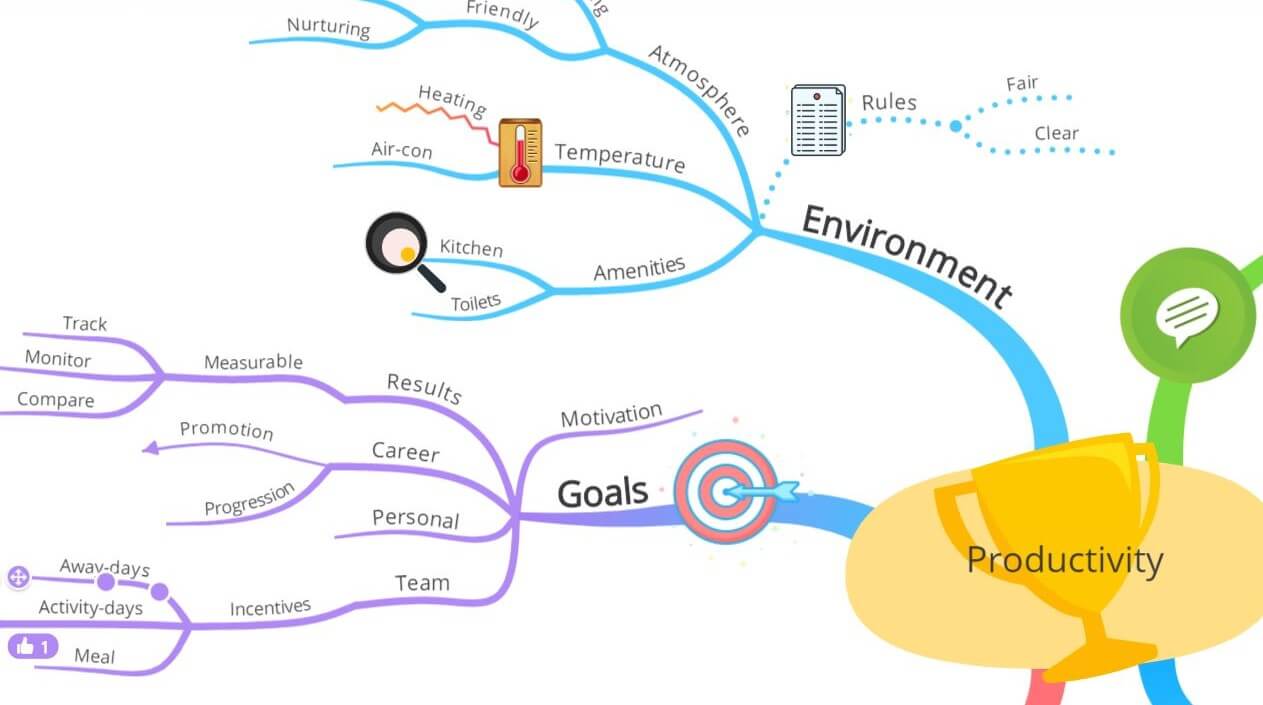
Dyslexia is just one of many neurological differences that exist in the world. According to the NHS, 1 in every 10 people in the UK are affected by dyslexia, and although it is more common than other neurological differences, there remain many misconceptions about dyslexia.
Fortunately, the awareness of dyslexia being a lifelong neurological difference that affects people in education, workplace and in everyday life is rising, alongside techniques and tools which can ameliorate the skills of dyslexic individuals.
Mind mapping is one of the few techniques which has repeatedly proven to have a positive impact upon people with dyslexia. Not only do mind maps have the capability to assist with activities which dyslexics might struggle with, they also have the potential to elevate the areas they excel at even further! They can assist the user with typical undertakings like learning, organisation, creative thinking and more.
In this blog we will take a look at how Ayoa has promoted an inclusive environment for support and improvement by building upon the visual foundation of mind maps and creating them digitally.
What is mind mapping?
A mind map is a visual thinking tool that displays the connecting thoughts which radiate out from one central idea. It is ideal for exploring ideas and presenting information in a uniquely visual way. Using a unique combination of colours, imagery and visual-spatial arrangement, mind maps help us to support and simulate our thinking process. This makes the tool truly effective for dyslexics and visual learners by enabling them to manage everything from daily tasks to capturing and enhancing their creative ideas.
People all around the world use mind maps for:
- Planning – from projects to essays.
- Organizing – from shopping lists to daily to-do plans.
- Note-taking – from lecture notes to capturing big ideas.
- Studying – used as a way to revise and prepare for exams.
How Ayoa’s mind maps go above and beyond
At Ayoa, visuals have always been an important factor. In the interest of unlocking the maximum creative potential for those with dyslexia, we have purposefully crafted our mind maps to make the bigger picture clearer, by removing the complexity of certain pieces of information in text form.
Research by design consultancy, Zabisco, discovered that 40% of people respond better to visual information than plain text. Visual cues and stimuli therefore make it easier to receive and retain information. As the brain is capable of absorbing 36,000 visual images every hour, Ayoa’s bias towards visuals makes it an extremely effective way of processing and retaining information.
The link between mind mapping and dyslexia
Although it’s not known if mind maps were initially designed with dyslexia in mind, their creator, Tony Buzan, produced mind maps with the sole aim of enhancing the brain’s output. This mission led him to discover that imagery, rather than elongated words, was arguably more powerful at conveying meaning, retaining memory and improving organisation.
It is universally acknowledged that working via visual means is particularly beneficial for those with dyslexia since a common symptom of the condition is difficulty in processing words. Look at any mind map and you will find that visual cues – bold colours, images, concise pieces of text and short and snappy words- rule supremely, thus making it one of the most useful tools for dyslexics.
What are the benefits of mind mapping for dyslexia?
- Mind mapping helps with organization
Dyslexics can sometimes find it difficult to remain organised, but mind mapping is a tool that simplifies organising tasks and ideas in one, visual display. It is easy to add separate branches and categorize information in different areas. Concurrently, you can use various colours to differentiate the branches, making it easy to identify the important information without getting overwhelmed by too many words.
- Mind mapping improves concentration
While it might be difficult for dyslexic people to get their initial ideas down on a blank page, they can draw a mind map, using a central idea as the starting point and expanding on it. It then becomes easier to see how their ideas connect together and where they can grow. It also ensures that they stick to the central idea and not divert from the topic they wish to explore, just looking at the mind map can bring them back to their central idea. This approach gives the flexibility to get ideas down first and then use a more linear structure at a later point.
- Mind mapping breaks down complex information
Using mind maps can also help with dyslexia by breaking down large pieces of information into more manageable, bite-sized chunks. In the working environment, particularly writing official reports or policies can be a challenge as they present you with a lot of dense and extended information. Mind maps can help to break down the extensive and detailed information into categories of smaller pieces using various branches and visually pleasing stickers, boxes or colours which are easier to process and remember.
How does Ayoa help with dyslexia?
Ayoa remains faithful to the visual learning principles of mind mapping and offers a variety of mind map styles to suit your preferences. It provides a wide range of easy-to-use features that are ideal for both individual and collaborative working, thus better enhancing concentration, productivity and creativity.
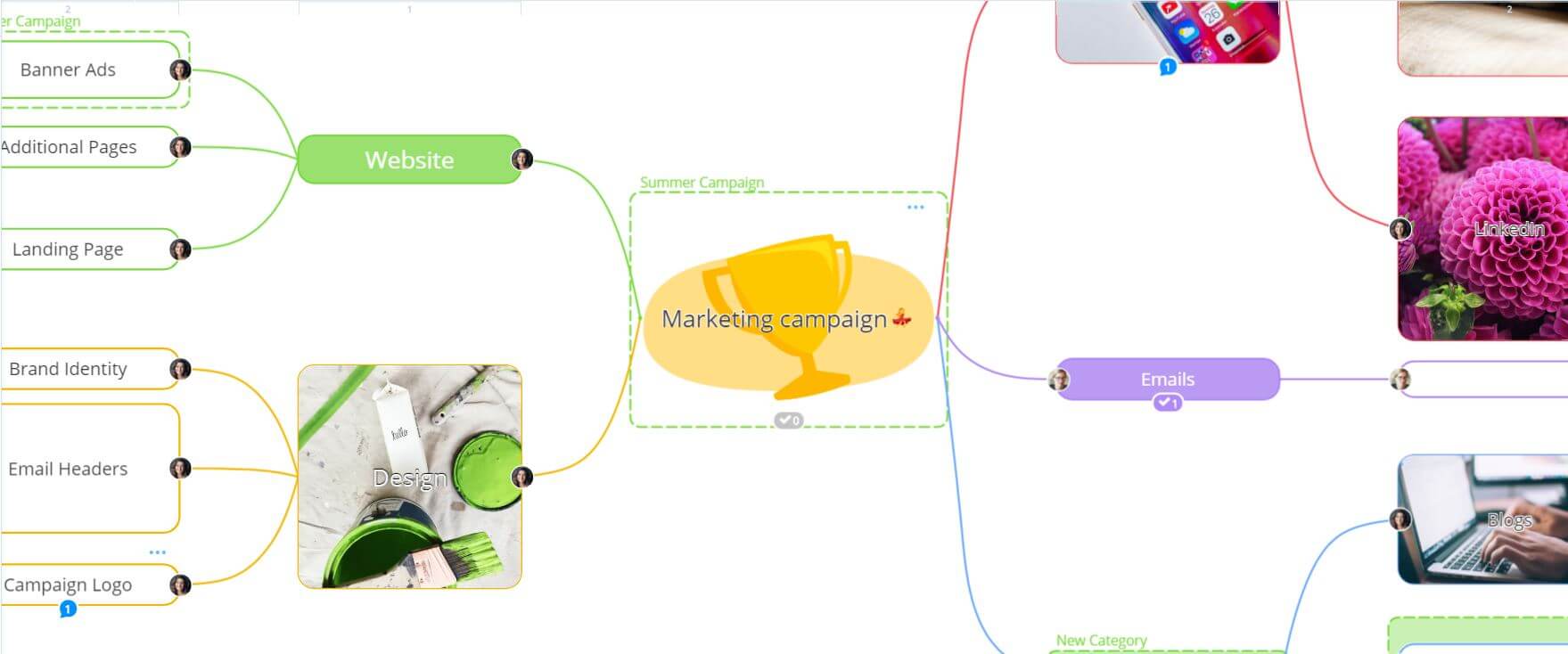
Central idea images
You can choose from a variety of stickers to use as your central idea, which will represent the topic you want to explore. The visual nature of your central idea, stimulates memory and associations in your brain. Consequently, any idea you add to your map is automatically anchored to your central idea. This means you’ll almost permanently retain the sight of your main topic in your brain.
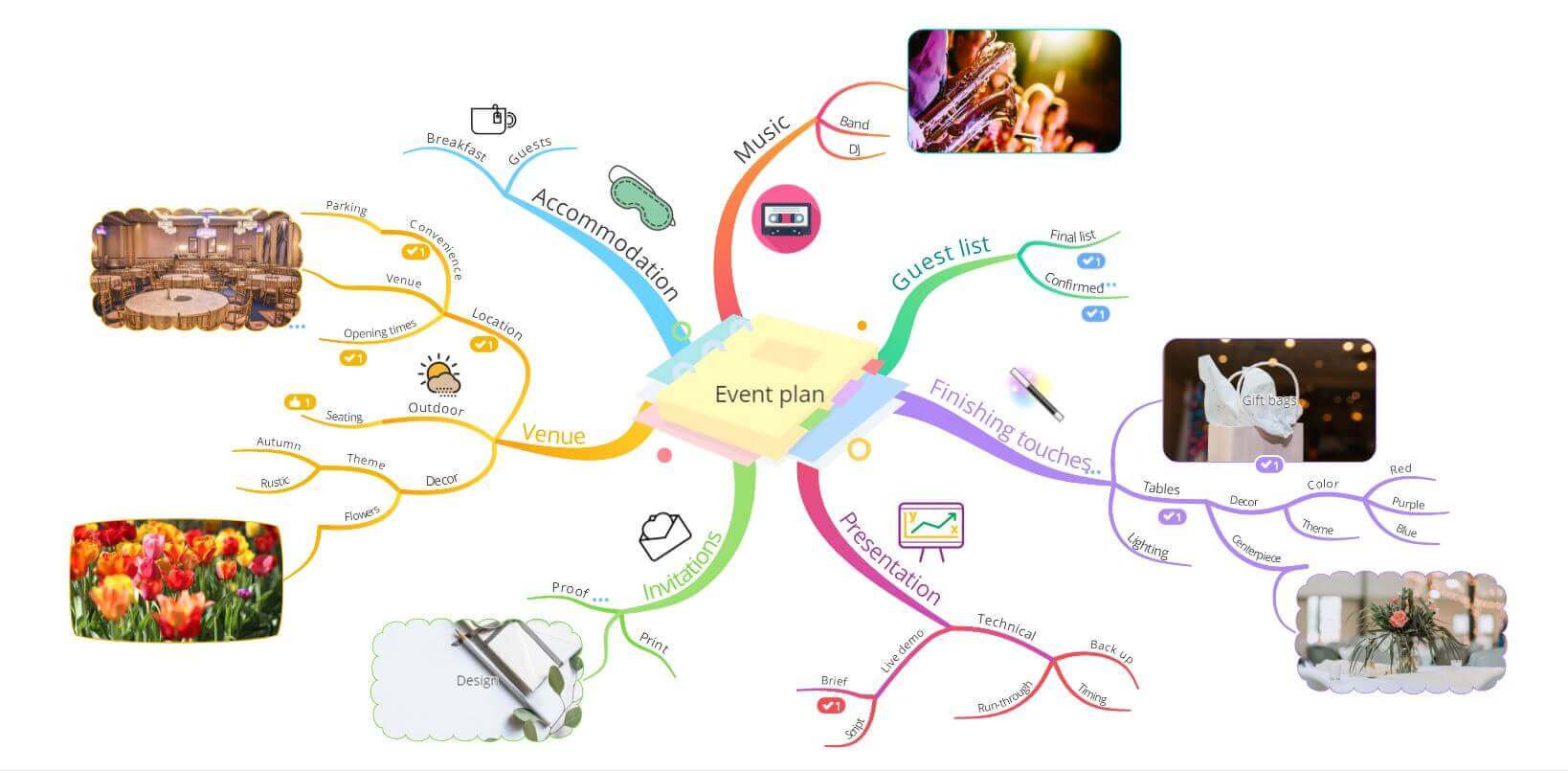
Curved, radiating branches
Ayoa’s Organic mind maps, in particular, use curved branches that fan out from your central idea to stimulate your thinking processes. When you think of an idea, this tends to spark numerous connected trains of thoughts within your brain. This ensures that you can dip into your map at any point and add new ideas and build on them as they come to you.
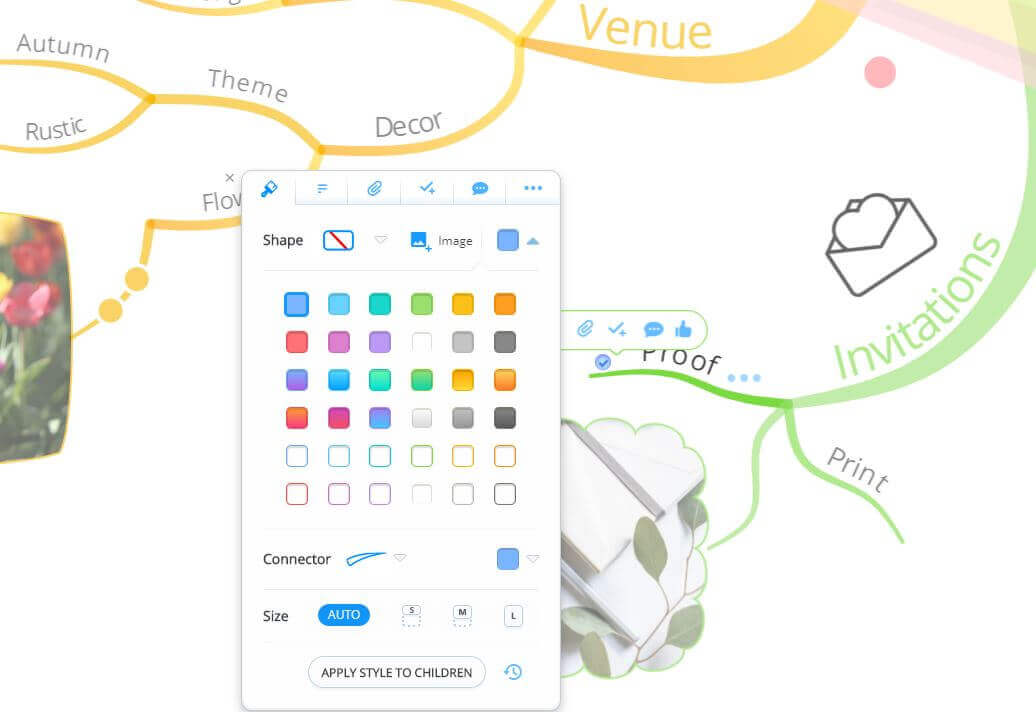
Customize with color
Ayoa’s unique branch editor tools allow you to customize and style the branches on your mind map as per your will. The default font on Ayoa is ensured to be dyslexia friendly, with the ability to edit the colour and size of your text and branches wherever required. This makes categorizing different areas of your mind map using visual indicators very easy, making the information on your map much simpler to process.
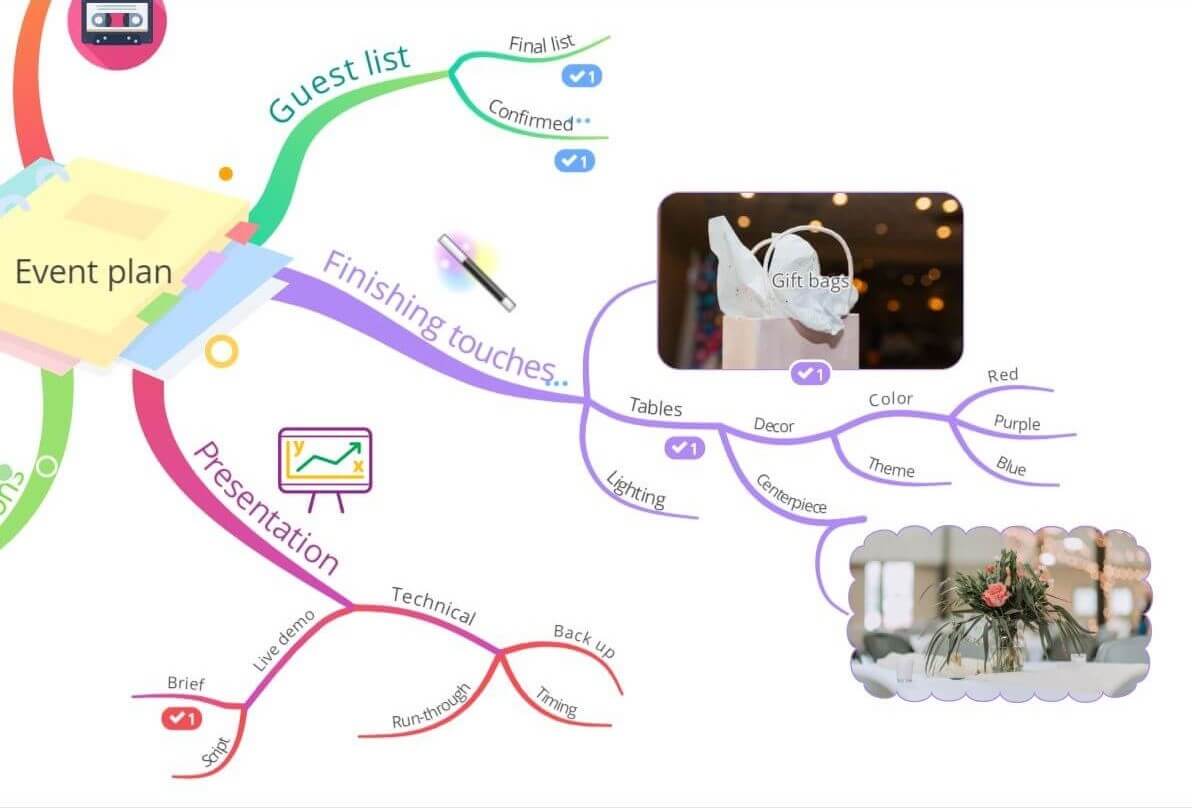
Add supporting images as visual signifiers
Ayoa also allows you to add relevant images to your mind maps to help in identifying certain topics at a glance. You can add an image directly to a branch to represent each idea. You can either upload images from your library or even search for them directly from the gallery within the branch editor. Adding these images makes your mind map more engaging, ideal for presenting information and communicating ideas.
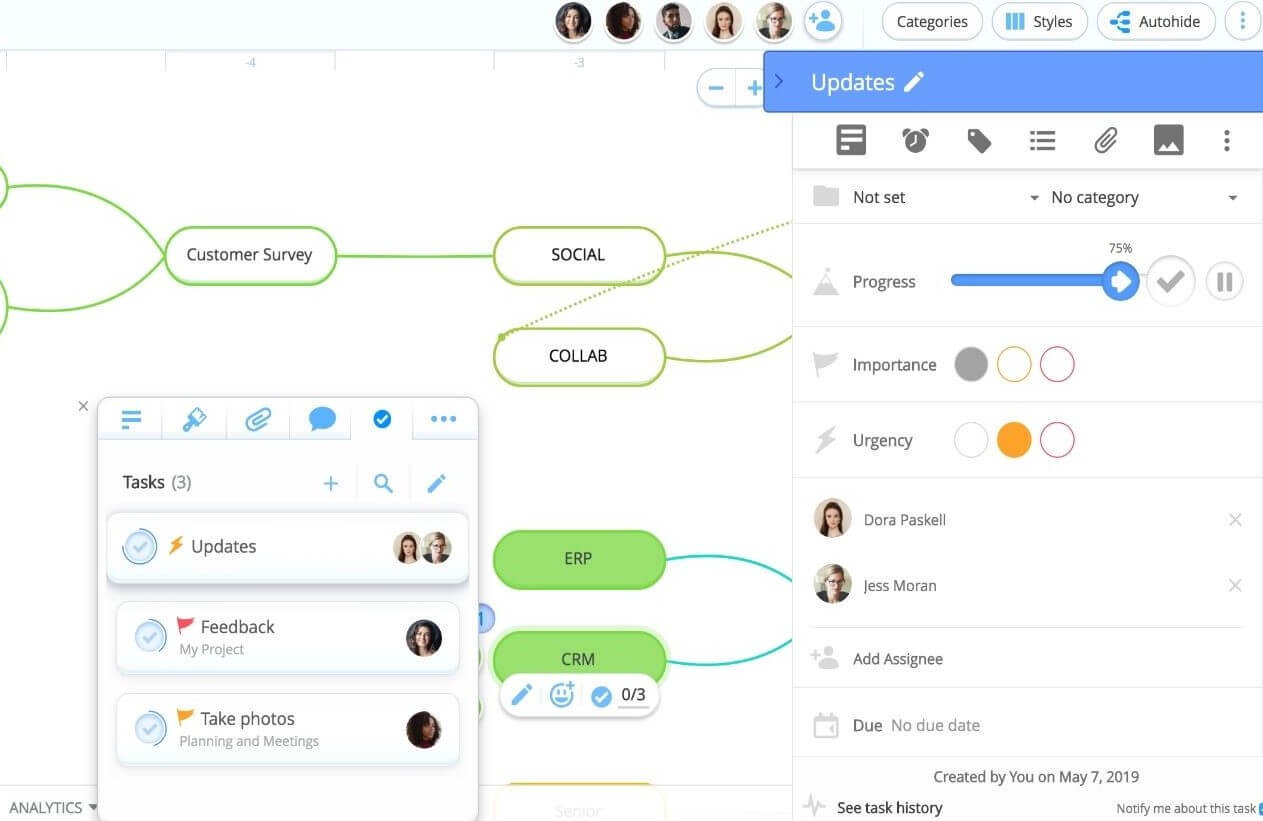
Organization for the whole workplace
Along with supporting people with dyslexia with creative thinking and adaptable mind maps, Ayoa also consistently synchronises mind mapping with task management features. This enables you to convert any idea created in a mind map into a task. You can then add notes, assign due dates, reminders, checklists and more. This function takes the processing of organising your thoughts a step further and makes it a tool that can be used to aid organisation skills throughout the workplace.
Mind mapping can provide dyslexic thinkers with stronger independence and boost their confidence to capture and develop their ideas. Discover more about mind mapping in Ayoa and how it can help you to process information and organize your work in a way that works with your brain.
Ayoa is also on the DSA (Disabled Student Allowance) list of approved suppliers for Student Finance England. We also offer all students and educators 35% discount on all our plans, so you can make the most of Ayoa during your studies.
Summary
Owing to the highly visual characteristics and minimum use of text, mind maps prove to be a great tool for dyslexic people that not only enhances their creativity and organisational skills, but also their confidence. Mind mapping, and particularly Ayoa, provides them with a flexible environment to explore their ideas in a way their brain thinks fit. In a world where linear working formats and highly text based essays, reports and to-do lists, etc. dominate the work culture, having the visual alternative of mind maps offers dyslexic individuals a great opportunity to excel.
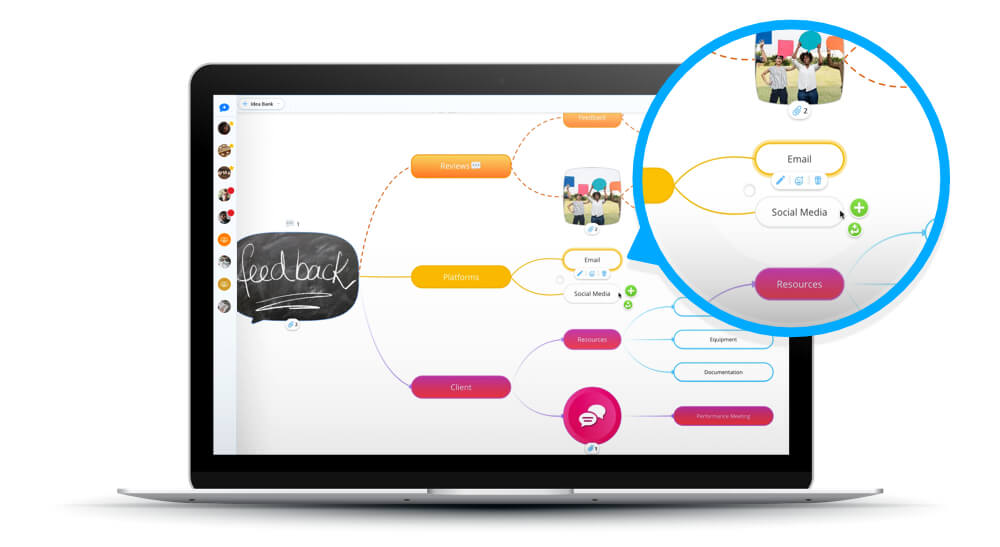
Create your first mind map today
Choose your favorite mind mapping style to brainstorm ideas, create a detailed project plan or add structure to your work.
Get started for free